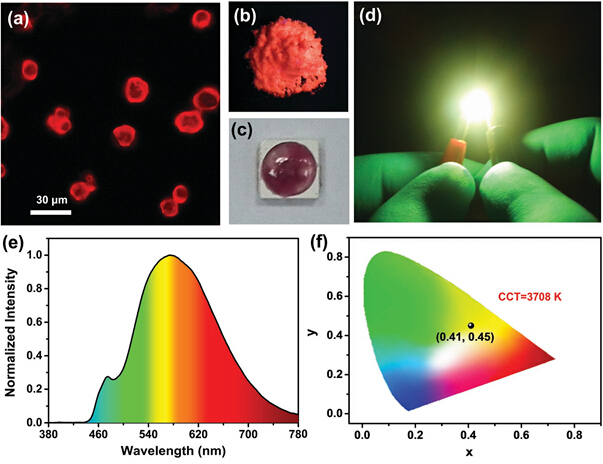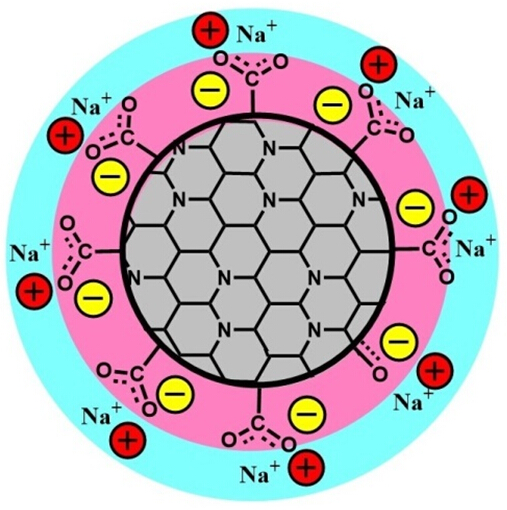Author: |
浏览量:Professor Songnan Qu and his team at CIOMP have developed strong orange emissive carbon nanodots (CNDs) with a fluorescent quantum yield of up to 46% – almost double that previously achieved for long-wavelength emissive CNDs. This work was recently published in the journal Advanced Materials.
CNDs have attracted broad research interest in recent years, because they provide carbon nanomaterials with excellent photoluminescent properties. Their distinct advantages, such as low toxicity, good luminescent properties, biocompatibility, low cost and widely available raw materials, make CNDs superior to conventional fluorescent materials.
Although strong blue and green emissive CNDs with high photoluminescent quantum yields have been developed, the development of the more efficient long-wavelength (orange and red light) emissive CNDs has been hindered by technical barriers. Prof. Qu and his team overcame these challenges through chemical and engineering innovations to achieve an unparalleled photoluminescent quantum yield of 46%, surpassing previously reported yields of 24–26% for red-emissive CNDs.
Over the past 5 years, Prof. Qu’s team at CIOMP has carried out many investigations on CNDs. The team’s achievements include the development of a new type of green emissive CND from citric acid and urea (Angew. Chem. Int. Ed., 2012, 51, 12215), the creation for the first time of optical pumped green lasers from CNDs (Adv. Funct. Mater., 2014, 24, 18) and the development of water-triggered luminescent nano-bombs based on supra-CNDs (Adv. Mater., 2015, 27, 1389).
In the current study, Prof. Qu’s team developed a new strategy for solvothermally synthesizing orange emissive CNDs. The band gap of CNDs can be controlled by modulating the size of conjugated sp2-domains. Prof Qu’s team demonstrated that the organic compound dimethylformamide (known as DMF) is a good solvent for the formation of CNDs with larger sp2-domains, which are the basis of orange emissions. Using these newly developed CNDs, the team prepared efficient orange emissive CND-based phosphors and manufactured warm white light-emitting diodes. This work will promote the development and application of CNDs.
Research on CNDs by Prof. Qu’s team is supported by the Outstanding Young Scientists Program of Chinese Academy of Sciences, the Program of the Young Scientific and Technological Innovation Leader and Team in Jilin Province, and Project supported by State Key Laboratory of Luminescence and Applications.

(a) Atomic power figure of CNDs. (b)Transmission electron microscopy figure. (c) High resolution transmission electron microscopy figure.(d) Focused figure
(Image by Dr.QU Songnan)

(a) Fluorescent figure under the fluorescence
(e) Light spectrum in the work. (f) Color coordinate graph
(Image by Dr.QU Songnan)

Structure diagram
(Image by Dr.QU Songnan)
Key words:orange emissive carbon nanodots;green emissive CND;photoluminescent quantum
Article link: http://onlinelibrary.wiley.com/doi/10.1002/adma.201504891/full
Author Eamil: artqusongnan@163.com


 中文
中文

